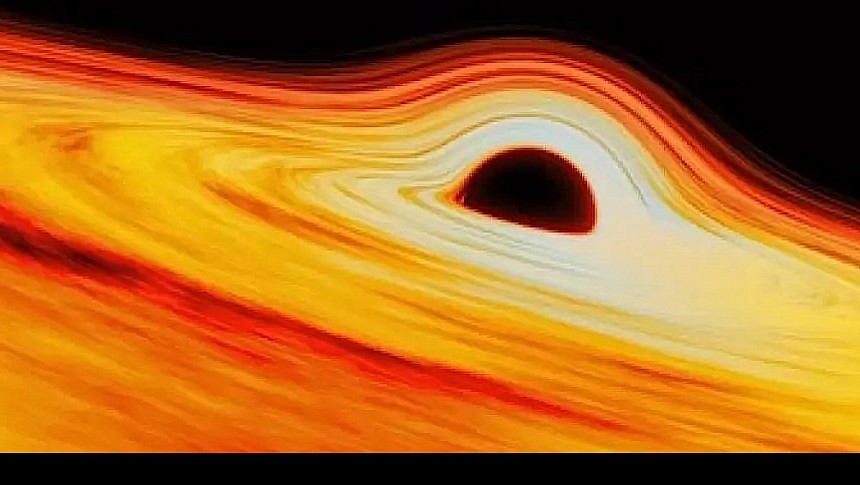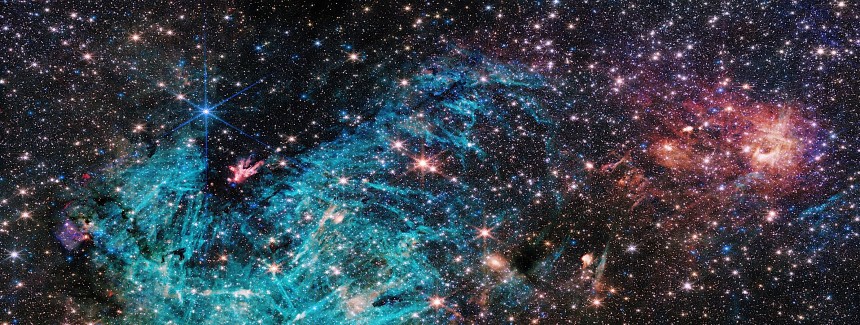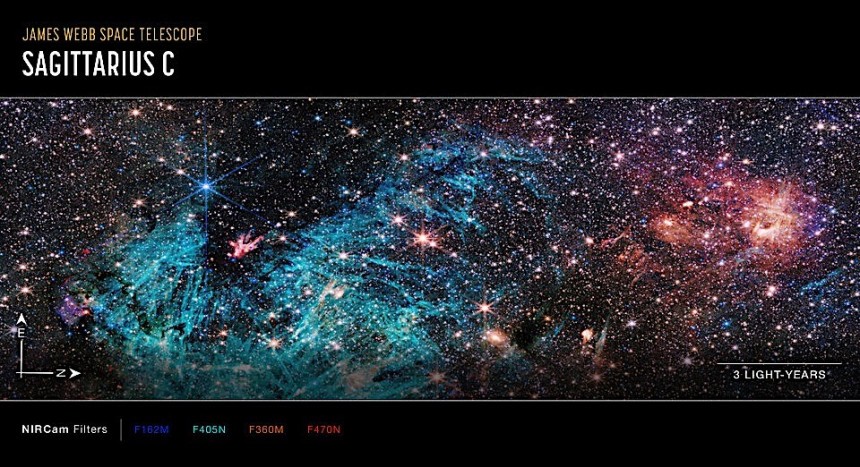As per NASA data, humanity has confirmed over 5,000 exoplanets to date. Those are planets located outside our solar system, which have only begun coming into focus in the 1990s. None of them has been visited by us so far, and chances are they will not be for a very, very long time, given our current level of technological development.
But what if, somehow, we were able to reach these distant worlds? How long would a trip to the most famous of them take? Could a human withstand such lengthy travels?
Sci-fi literature and movies offer pretty decent answers to those questions, but a more practical tool came to our attention recently: a space travel calculator that lets you know how long it would take to reach five of the most famous known exoplanets, but also pretty much any other known place in this Universe you desire.
The tool has been set up over on Omni Calculator by Steven Wooding and Álvaro Díez. It provides users with a way of visualizing how long it would take to reach random places in the known Universe, but also gives you a taste of how much supplies one would need to survive: food, water, and even entertainment.
The Exoplanet Travel Planner Calculator (that is the thing's official name) has seven pre-set destinations, all of them selected based on objects of interest for the James Webb Space Telescope.
The list of five exoplanets includes Webb's first confirmed planet find, the Earth-like LHS 475b (and another planet like our own, Kepler-186f), two Jupiter-like planets (51 Eridani b and WASP-39 b), and a mini-Neptune (K2-18 b).
The other two pre-set locations are the galactic center of the Milky Way, and a galaxy called NGC 6882, but aside from these seven locations, users can manually input their own, based on the distance of light years to their destination.
We chose to take a virtual trip to the center of our own galaxy and see the mighty supermassive black hole known as Sagittarius A sitting there. Our journey will be made in a spaceship that travels at the speed of light (Warp 1 if you are a Trekkie), but you should know you can also set the speed in miles per hour, kilometers per hour, and more.
We don't know the exact mechanics behind the calculator or how accurate the data it uses to crunch out the results is, but assuming everything is as it should, this tool really puts an emphasis on just how long and virtually impossible such a trip really is.
First, there's the duration of the journey. The galactic center of the Milky Way is located at a distance of 26,000 light years from our planet, and that's exactly how long it would take a spaceship traveling at Warp 1 to reach it.
At least that's from the perspective of an observer here on Earth; as for the ones traveling inside the ship itself, elapsed time from departure to arrival would "only” be 19,757 years. The difference is owed, of course, to the relativistic effects of speed on time: the faster you travel, the slower time passes.
The calculator estimates that a single person making the trip to Sagittarius A would require 17.89 metric tons of food and 428,932 gallons (1,623,683 liters) of water to survive. We are not told if the person in question would be hypothetically awake this whole time or submerged in some kind of cryo sleep every now and then, but the quantities remain impressive nonetheless.
If the person inside is mostly awake, it would need, of course, to keep themselves entertained. The Exoplanet Travel Planner Calculator gives us a taste of what that would mean as well.
In a nutshell, a single person spending up to four hours per day for rest and relaxation would need 962 good books, 5,499 movies, and 586 TV show seasons to not get bored to death during this very lengthy trip.
The numbers above may or may not be very scientific, and we don't know the data used to build the calculator, but the reality remains that it does paint a picture of interstellar space travel impossibility.
First up, humanity would have to build a spaceship capable of reaching speeds close to the speed of light. Then, it would need to be large enough to accommodate tons of supplies; people willing to spend their lives (and, if this is a generational ship we're talking about, the lives of their unborn families) in space are also required.
All of the above may be overcome one way or another, eventually, but the calculator makes obvious one aspect of this whole thing that makes interstellar space travel futile in some sense.
Humans generally have a very short attention span, and not even the most outstanding successes or devastating disasters can keep them focused for long. A space mission designed to start today and scheduled to end 26,000 years from now would immediately be forgotten here on Earth.
So whoever leaves this planet for a place outside our solar system would do it for good, free to create whatever civilization they desire.
Sci-fi literature and movies offer pretty decent answers to those questions, but a more practical tool came to our attention recently: a space travel calculator that lets you know how long it would take to reach five of the most famous known exoplanets, but also pretty much any other known place in this Universe you desire.
The tool has been set up over on Omni Calculator by Steven Wooding and Álvaro Díez. It provides users with a way of visualizing how long it would take to reach random places in the known Universe, but also gives you a taste of how much supplies one would need to survive: food, water, and even entertainment.
The Exoplanet Travel Planner Calculator (that is the thing's official name) has seven pre-set destinations, all of them selected based on objects of interest for the James Webb Space Telescope.
The list of five exoplanets includes Webb's first confirmed planet find, the Earth-like LHS 475b (and another planet like our own, Kepler-186f), two Jupiter-like planets (51 Eridani b and WASP-39 b), and a mini-Neptune (K2-18 b).
The other two pre-set locations are the galactic center of the Milky Way, and a galaxy called NGC 6882, but aside from these seven locations, users can manually input their own, based on the distance of light years to their destination.
We don't know the exact mechanics behind the calculator or how accurate the data it uses to crunch out the results is, but assuming everything is as it should, this tool really puts an emphasis on just how long and virtually impossible such a trip really is.
First, there's the duration of the journey. The galactic center of the Milky Way is located at a distance of 26,000 light years from our planet, and that's exactly how long it would take a spaceship traveling at Warp 1 to reach it.
At least that's from the perspective of an observer here on Earth; as for the ones traveling inside the ship itself, elapsed time from departure to arrival would "only” be 19,757 years. The difference is owed, of course, to the relativistic effects of speed on time: the faster you travel, the slower time passes.
The calculator estimates that a single person making the trip to Sagittarius A would require 17.89 metric tons of food and 428,932 gallons (1,623,683 liters) of water to survive. We are not told if the person in question would be hypothetically awake this whole time or submerged in some kind of cryo sleep every now and then, but the quantities remain impressive nonetheless.
If the person inside is mostly awake, it would need, of course, to keep themselves entertained. The Exoplanet Travel Planner Calculator gives us a taste of what that would mean as well.
The numbers above may or may not be very scientific, and we don't know the data used to build the calculator, but the reality remains that it does paint a picture of interstellar space travel impossibility.
First up, humanity would have to build a spaceship capable of reaching speeds close to the speed of light. Then, it would need to be large enough to accommodate tons of supplies; people willing to spend their lives (and, if this is a generational ship we're talking about, the lives of their unborn families) in space are also required.
All of the above may be overcome one way or another, eventually, but the calculator makes obvious one aspect of this whole thing that makes interstellar space travel futile in some sense.
Humans generally have a very short attention span, and not even the most outstanding successes or devastating disasters can keep them focused for long. A space mission designed to start today and scheduled to end 26,000 years from now would immediately be forgotten here on Earth.
So whoever leaves this planet for a place outside our solar system would do it for good, free to create whatever civilization they desire.







